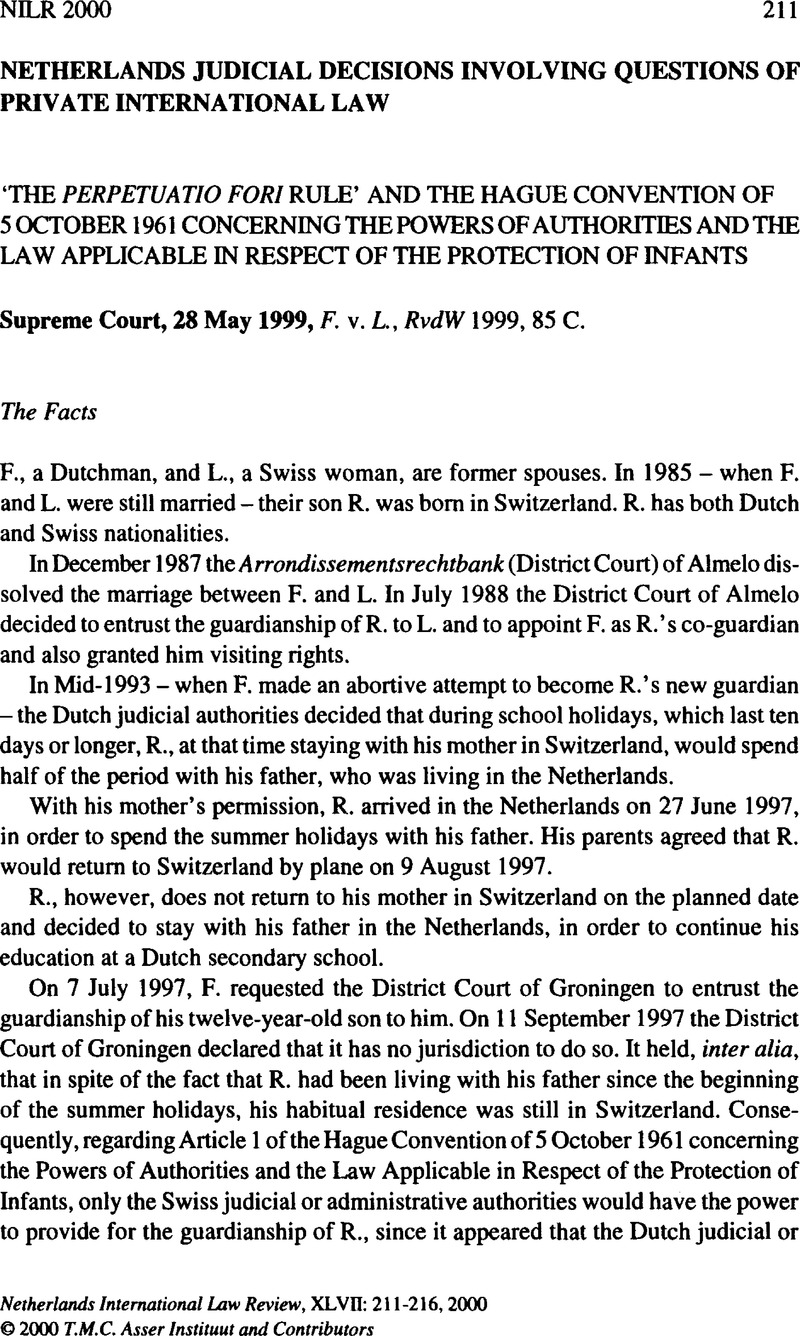No CrossRef data available.
Published online by Cambridge University Press: 21 May 2009

1. Art. S of the 1961 Convention on the Protection of Infants states as follows:
‘(1) If the habitual residence of an infant is transferred from one contracting State to another, measures taken by the authorities of the State of the former habitual residence shall remain in force in so far as the authorities of the new habitual residence have not terminated or replaced them.
(2) Measures taken by the authorities of the State of the former habitual residence shall be terminated or replaced only after previous notice to the said authorities.
(3) In the case of change of residence of an infant who was under the protection of authorities of the State of his nationality, measures taken by them according to their domestic law shall remain in force in the State of the new habitual residence’ (from: G. van Bueren, ed., International Documents on Children (Dordrecht/Boston/London, Martinus Nijhoff 1993) chapter 30, p. 128).
2. Art. 1 of the 1961 Convention on the Protection of Infants states as follows:
‘The judicial or administrative authorities of the State of the habitual residence of an infant have power, subject to the provisions of articles 3 and 4, and paragraph 3 of article 5 of the present Convention, to take measures directed to the protection of his person or property’ (from: International Documents on Children, op. cit. n. 1, chapter 30, p. 127).
3. Actes et Documents de la Neuvième Session de la Conferénce de La Haye de droit international privé, Vol. IV (The Hague 1961), De Steiger Report, p. 221 and p. 222 (‘la nouvelle convention crée un état d' équilibre’).
4. Actes et Documents de la Neuvième Session, op. cit. n. 3, p. 146 and p. 221 (‘Ainsi, il a fallu renverser I'ordre des rattachements en faisant intervenir, en premier lieu, les autorités de l'État de l a résidence habituelle qui, il faut le reconnaitre, sont en genéral mieux à même d'apprécier la situation dans laquelle se trouve un mineur, ainsi que les mesures de protection indiquéen l'espece’).
5. See, inter alia, J. Kropholler, Handbuch des Internationalen Zivilverfahrensrechts, Vol. I (Tübingen, Mohr 1982) chapter ffl, nos. 228–234.
6. See, inter alia, M. Sumampouw, Les nouvelles conventions de La Haye, Vol. V (The Hague, Martinus Nijhoff Publishers 1996) pp. 51–67.
7. See the Proceedings of the Eighteenth Session of the Hague Conference on Private International Law, Vol II: Protection of Children (The Hague, SDU 1998), Lagarde Report, no. 42.
8. For an opposite approach: Lagarde Report, supra n. 7, no. 42.